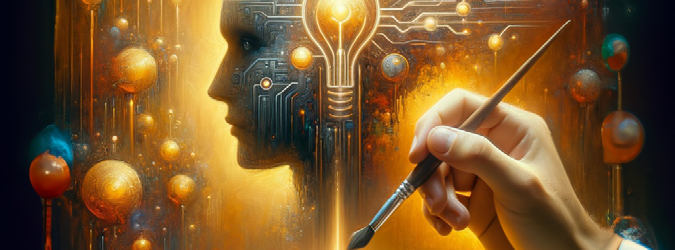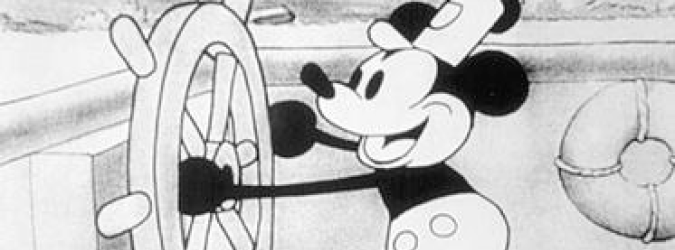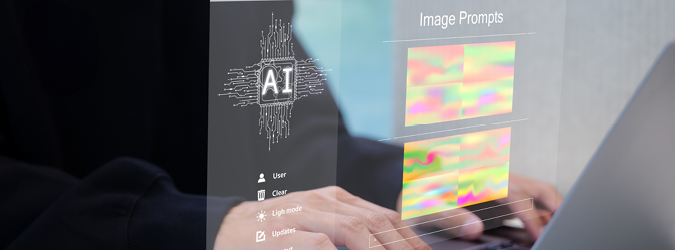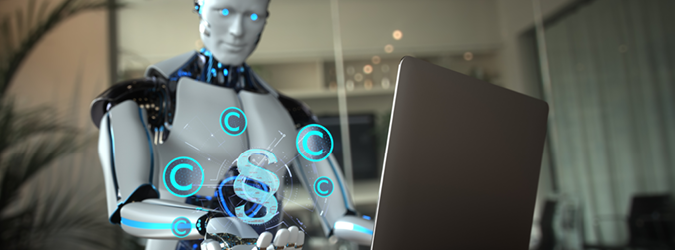Does Copyright Protection Extend Beyond Original Works in an AI World?
4.8.2024

We are living in a pre-“Matrix” world1 – the version before the super-powerful computer programs in the machine world take over, leaving the humans to live in a simulated reality.
Artificial intelligence2 has already taken over the zeitgeist and soon your entire life.
At its core, AI, and its progeny generative AI,3 bring the allure of efficiency.4 Need to write a brief? Use ChatGPT. Searching for an image for your next presentation deck? Try DALL-E or Midjourney. Craving a “Scooby Doo”/”Law & Order” video mash-up? Check out Sora. Yet, as great as these shiny new toys may seem to be, the exchange of technology for efficiency comes at a cost. We’ve already begun to see the pitfalls and consequences from the unsupervised use of generative AI5 – an intriguing twist in the era of deepfakes and disinformation. We even have a term for when AI starts “acting bad”: hallucination.6 This doesn’t even take into account the adverse and unintended human effects – for example, mass unemployment caused by the replacement of the human workforce by AI, a major source of consternation and conversation during the 2023 Hollywood strikes.7
From a legal perspective, even though the use of AI dates back to the 1950s8 – when used in the broad context to describe computer systems capable of performing autonomously – the proliferation of AI today brings to the forefront questions that we have not previously considered, specifically from a copyright law perspective: Should AI itself be considered an “author” under copyright law? Should the users of AI be considered the “author” of the works they create, and should those works be eligible for copyright protection? Or, alternatively, should copyright protection be granted to the developer of the AI tool(s) used to create a work? This article will explore these questions and how AI may shape the future of copyright law.
When discussing whether AI-assisted and/or AI-generated works should be eligible for copyright protection and who (or what) should receive copyright registration for these works, we must first start the analysis with the black letter law.9 Broadly speaking, under most international copyright law regimes, authors are granted protection automatically upon the creation of their original works.10 Applying this framework to AI-assisted and/or AI-generated works would mean that either AI itself or the creator of an AI-assisted and/or AI-generated work would be considered the author upon the creation of such work. And yet, we know that is not the case; certain works are not eligible for copyright protection based on who created them and how they were created. Take, for example, the case of the Monkey Selfie.11 In Naruto v. Slater, Naruto, a Celebes crested macaque, took photos of himself on a wildlife photographer’s camera. The subsequent legal dispute between People for the Ethical Treatment of Animals, on behalf of Naruto, and the photographer centered on whether Naruto could own the copyright in those photos.
In the case of AI-assisted and/or AI-generated works, these are works created as a result of training systems on massive amounts of preexisting human-authored works (“input data”), feeding specific prompts into these systems, to then create new works (“outputs”). Similar to Naruto, under current U.S. case law and guidance, AI cannot be considered an “author” nor are AI-assisted and/or AI-generated works considered eligible for copyright protection because copyright does not extend to non-human authored works.12 Recent case law and U.S. Copyright Office guidance from the visual art world highlight how various jurisdictions have applied this principle.
In In re Zarya of the Dawn (2023), Kris Kashtanova became the first person to register a copyright for an AI-assisted work, a comic book called “Zarya of the Dawn.” Upon learning that Kashtanova used Midjourney to create the images in the comic book, the U.S. Copyright Office later canceled the original registration finding that while “Ms. Kashtanova is the author of the Work’s text as well as the selection, coordination, and arrangement of the Work’s written and visual elements . . . the images in the Work that were generated by the Midjourney technology are not the product of human authorship.” Because the original registration for the work did not disclaim its Midjourney-generated content, the Copyright Office subsequently canceled the original certificate and issued a new one covering only the expressive material that Kashtanova created.13
In In re SURYAST, Ankit Sahni used a custom-built AI system called RAGHAV to create SURYAST, a work in the “style” of Vincent van Gogh’s “The Starry Night,” using an original photograph of a sunset created by Sahni as a base image. In December 2023, the Copyright Office rejected the SURYAST registration application because it deemed that Sahni did not provide sufficient “creative control” over RAGHAV in the creation of SURYAST.14
In Thaler v. Perlmutter, inventor Stephen Thaler sought copyright registration for a work created by Thaler’s own generative AI system, the aptly named “Creative Machine.” Specifically, Thaler requested that the “Creative Machine” be named as the author and that the copyright should be transferred to him as the owner of the machine. The Copyright Office denied Thaler’s registration application. Thaler subsequently sued Shira Perlmutter, in her official capacity as the Register of Copyrights, in D.C. District Court. The district court held that an AI-generated artwork is not eligible for copyright protection where AI is identified as the sole creator and human involvement is absent in the creation process because human authorship is a requirement of copyrightability.15 Notably, Thaler has pursued a similar legal theory under patent law.16
It is also worth mentioning Li Yunkai v. Liu Yuanchunv. Here, the Beijing Internet Court granted copyright protection for AI-generated pictures created by an artist using the Stable Diffusion AI image generator. The court found that the work created was eligible for copyright protection because the users of the AI software provided “intellectual inputs,” such as deliberately picking the presentation of characters, selecting prompt words, arranging the order of the prompt words and choosing the prompt parameters. The court held that these activities were sufficient to reflect a human author’s personalized expression and originality.17
While the current legal landscape appears to be mostly settled for the time being, two key fact-based inquiries could lead courts to adopt a new framework and guidance to intellectual property protection for AI-assisted and/or AI-generated works going forward: (1) does the creator utilize an open source or proprietary AI tool in the creative process, and (2) what is the source of the training or input data for the AI tool?
A creator using an open-source AI tool, for example ChatGPT or Midjourney, does so by relying on a tool that is developed by a third party and trained on various other third parties’ works.
Should an individual be considered an author if they rely on an open-source tool in the creative process? Should those works be eligible for copyright protection? Arguably no, because such works are in fact “crowd-sourced” or a joint work18 – assuming the party providing the training data permissively provided such data. In essence, everyone and no one owns the copyright. Current guidance comes to the same conclusion (e.g., no copyright protection for AI-assisted or AI-generated works), but in a way that ignores the ever growing number of Thalers within the pantheon of AI creators and developers – individuals who create works using their own proprietary AI systems that are trained on creator/developer-curated data sets, such as the works of Refik Anadol.19 Creators who use these types of AI tools and the works created from them deserve another approach. Given that computer programs are eligible for copyright protection,20 shouldn’t the proprietary AI tool and the output works be eligible for copyright protection, with the output works being deemed as derivative works created from such systems and the creator of the system being deemed the author? Certainly, there is human authorship in the computer program and in the selection and arranging of the training data. Thus, when discussing intellectual property protection of an AI-created work, the analysis should first start with a fact-based inquiry about the creation of the work, which should explore questions such as:
• What AI tools did the creator use? Are the tools proprietary (e.g., Thaler’s DABUS + Creativity Machine) or open source (e.g., In re Zarya of the Dawn)?
• How does the AI “learn”? What was the AI trained on?
The answers to these inquiries may highlight distinctions that could provide an opening to more jurisdictions accepting a limited protection for certain AI works in the future. However, the courts and Copyright Office will need more time to lean into these nuances before reconsidering whether to afford protection to AI-created works.
Given the current legal landscape and risks, businesses that are or are planning to incorporate AI into their day-to-day should do so with careful consideration after first developing internal best practices, which should include:
• Understanding your “why”: Why are you using AI? To dip a toe in as an experiment? Jumping on a trend? What are the implications for the business and the bottom line? What is your risk profile? What due diligence or compliance programs do you have in place to analyze the risk of using AI-generated works? Do you have adequate insurance coverage in place?
• Understanding the AI “creation” process: What information do you intend to disclose in your AI prompt? Do you have permission to publicly disclose that information? Will the resulting AI-generated work be an unauthorized derivative work?21 How will you know whether the output is factually correct (and not the result of a “hallucination”)?
Keep in mind that intellectual property isn’t the only area of law implicated by the use of AI. Beyond the intellectual property issues, you will also want to be sure that you don’t inadvertently breach a non-disclosure or confidentiality agreement or violate any data privacy laws. You should also be aware of any potential right of publicity and moral rights issues that could arise.22 Remember the fake Drake song “Heart on My Sleeve”?23 In this real-life example, the issue was how similar this non-Drake work sounded like his actual works and the subsequent harm to his reputation. Or, in another example, Keith Haring’s “Unfinished Painting” (1989), which was “completed” using a generative AI program, creating in essence an incorrectly attributed work that Haring did not in fact create.24 Currently, no law exists that says it’s illegal to train an AI system on Drake’s voice or Haring’s works;25 however, if AI-generated content uses an individual’s name, image, likeness or artistry in connection with a commercial purpose and attributes such work to the individual, then this could trigger a violation of one’s right of publicity or moral rights.26
As AI continues to evolve and challenge the traditional copyright norms so too will the discussions surrounding its uses in an effort to ensure that such uses remain ethical, responsible, and legal. Courts and scholars will continue to grapple with and unpack nuanced questions, like:
• Who is doing the content creation? Is AI the “tool” or merely “an assisting instrument”? Or is AI the “creator”?
• What value do we place on human artistry?
• If AI could receive copyright protection, how long should the copyright last? 27
The conversation on AI will likely lead us to the next meeting of the minds on copyright law, à la the next Berne Convention,28 as it also continues to push the progress of art and science.
Endnotes
1. The Matrix, IMDb, www.imdb.com/title/tt0133093/.
2. Artificial Intelligence, NVIDIA, www.nvidia.com/en-us/glossary/artificial-intelligence/.
6. What Are AI Hallucinations?, IBM, https://www.ibm.com/topics/ai-hallucinations.
19. Works / Media Artist + director, Refik Anadol, (2024), https://refikanadol.com/works/.






